Lucy Barnard is walking the length of the earth
A world-record attempt with Wombat – her blue heeler – by her side.
It’s 5.30pm in the Mexican town of San Cristobal de las Casas and Lucy Barnard is enjoying a rest day. The first woman to walk the length of South America, she recently crossed the halfway point of her attempt to walk the length of the earth, a journey that began in Ushuaia, Argentina and will eventually end in Utqiagvik, Alaska. And though there are many things I’d like to ask Lucy, our conversation begins with a question of her own, posed between bites of a muesli bar: ‘Why do I always organise these things for when I’m hungry?’
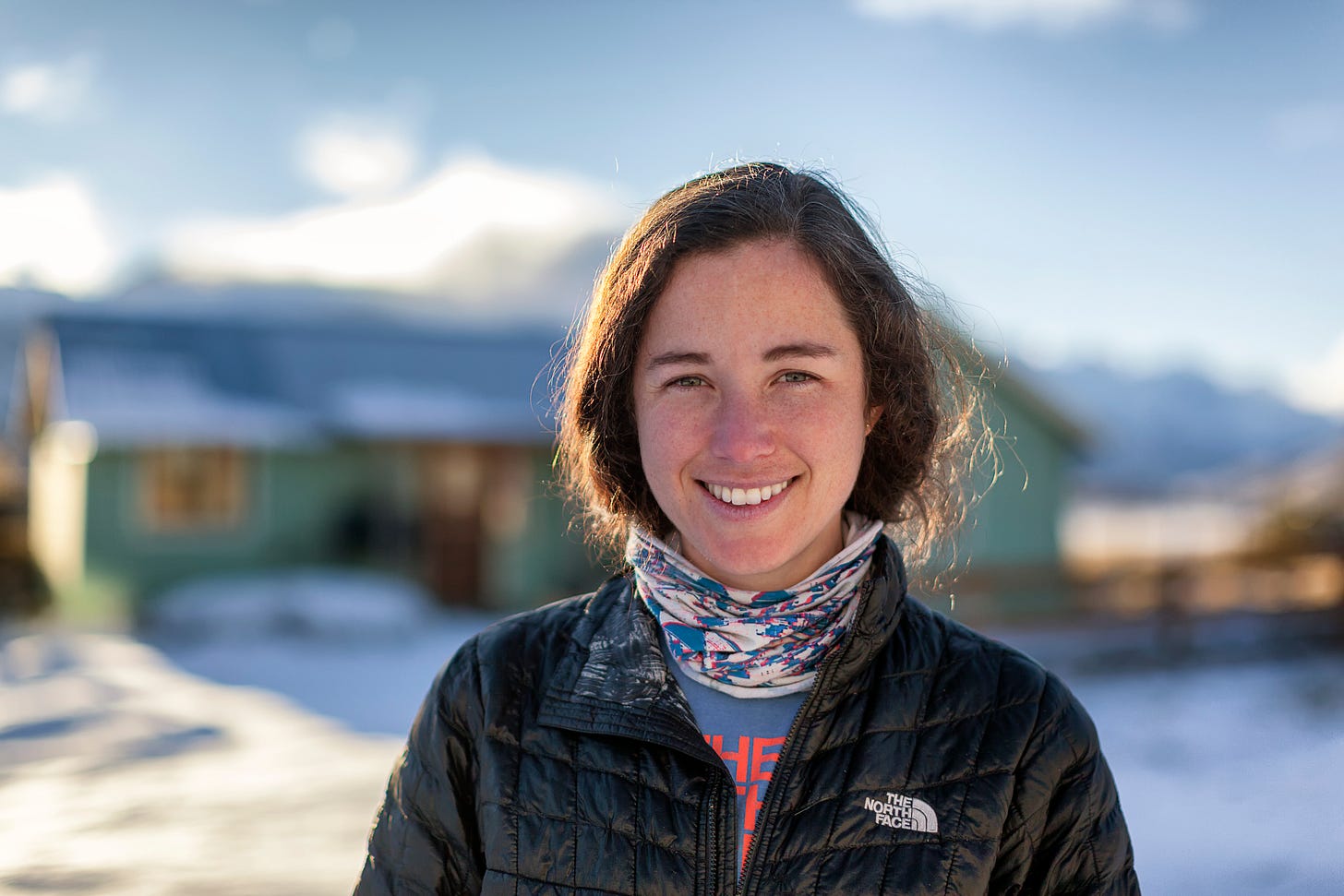
I don’t have an answer. Given Lucy is walking 30–40 kilometres a day, I imagine she’s hungry all the time. Especially when her regular breakfast, she tells me, is a tortilla with peanut butter. Her dinner? A tortilla with Vegemite. And for lunch? ‘I really just hope that I’ll run into a family and they’ll invite me in,’ says Lucy. ‘The people are so warm and lovely here that it actually happens. It’s a miracle that happens almost daily.’
Is that a miracle, I wonder, or it just what happens when we open ourselves up to the kindness of strangers? Is it a miracle that Lucy has made it on foot from Patagonia to Mexico, or a combination of determination, perseverance and an unfathomable amount of strength? And what about this expedition’s catalyst, the fact that it’s still going? The way Lucy describes things, the real miracle might be that she not only began this journey in 2017, but that she remains committed to it despite the difficulty and setbacks.
Imagine this: you’re on a 40-hour bus ride from Buenos Aires to Ushuaia. Flat plains, straight roads and minimal stimulation. There’s traffic. Delays. An infuriating wait for cattle to cross to greener pastures. I’d be putting on a playlist or podcast, but in 2016, while travelling as a regular tourist, Lucy became curious instead. She got Googling.
‘I was staring out the window thinking I could run faster [than the bus]; then I was like, I could probably walk faster. I knew, of course, that I couldn’t, but I thought it was interesting. Had anyone walked it? How long would it take? And then I wondered whether the Americas were connected. Could you walk to Alaska from Argentina? Had anyone done it? And then I learned about George Meegan.’

George Meegan, born 1952, is a British adventurer who, between 1977 and 1983, walked 30,608 kilometres from Argentina to Alaska. The journey took him 2,426 days and earned him the Guinness World Record for The Longest Unbroken March of All Time. In the forty years that have since passed, only three people have managed to replicate Meegan’s walk; Lucy, if successful, will be the fourth. And the first woman.
‘There was definitely a, like, hmm, that’s weird,’ says Lucy. ‘George Meegan finished around the time I was born and I couldn’t believe that no female, over the course of my entire existence, has been able to complete this. It definitely spurred me on. I wanted to experience how hard it was, how impossible. I wanted to see what barriers would come up. All of them, as it turns out.’
Those barriers include injuries and altitude. Extreme heat and cold. Snakes, scorpions and spiders. Illness. Long distances without resupply and trucks barrelling down a highway. Wondering where she will sleep, what she will eat, who she will meet. And then you can throw in a global pandemic; two years in Australia spent waiting to begin again, to be reunited with Wombat, Lucy’s blue heeler, who has been by her side since she adopted him as a puppy in Chile.
‘Wombat is the star of the show,’ admits Lucy. ‘People care about him a lot more than they care about me. People ask about his health status more than mine. Anytime I post something about Wombat being injured, people who aren’t vets will message to say actually, you shouldn’t be doing this.’
Lucy is quick to point out that she cares deeply for Wombat. ‘He’s really important to the walk,’ she says. ‘He makes my life so much easier and my security so much better. And I’m also an animal person. I take my role as his carer seriously and have a bunch of vet specialists I work with. One of them specialises in canine nutrition and he says that Wombat doesn’t even come close to doing the number of kilometres he’s capable of doing. A working dog can do 70–100 kilometres a day without problems, but they need to have good nutrition. Since Wombat is doing 30–40 kilometres, this vet describes him as just being a dog in the outdoors enjoying nature. It’s incredible to me that we consider humans to be better equipped for long-distance endurance than a working dog.’
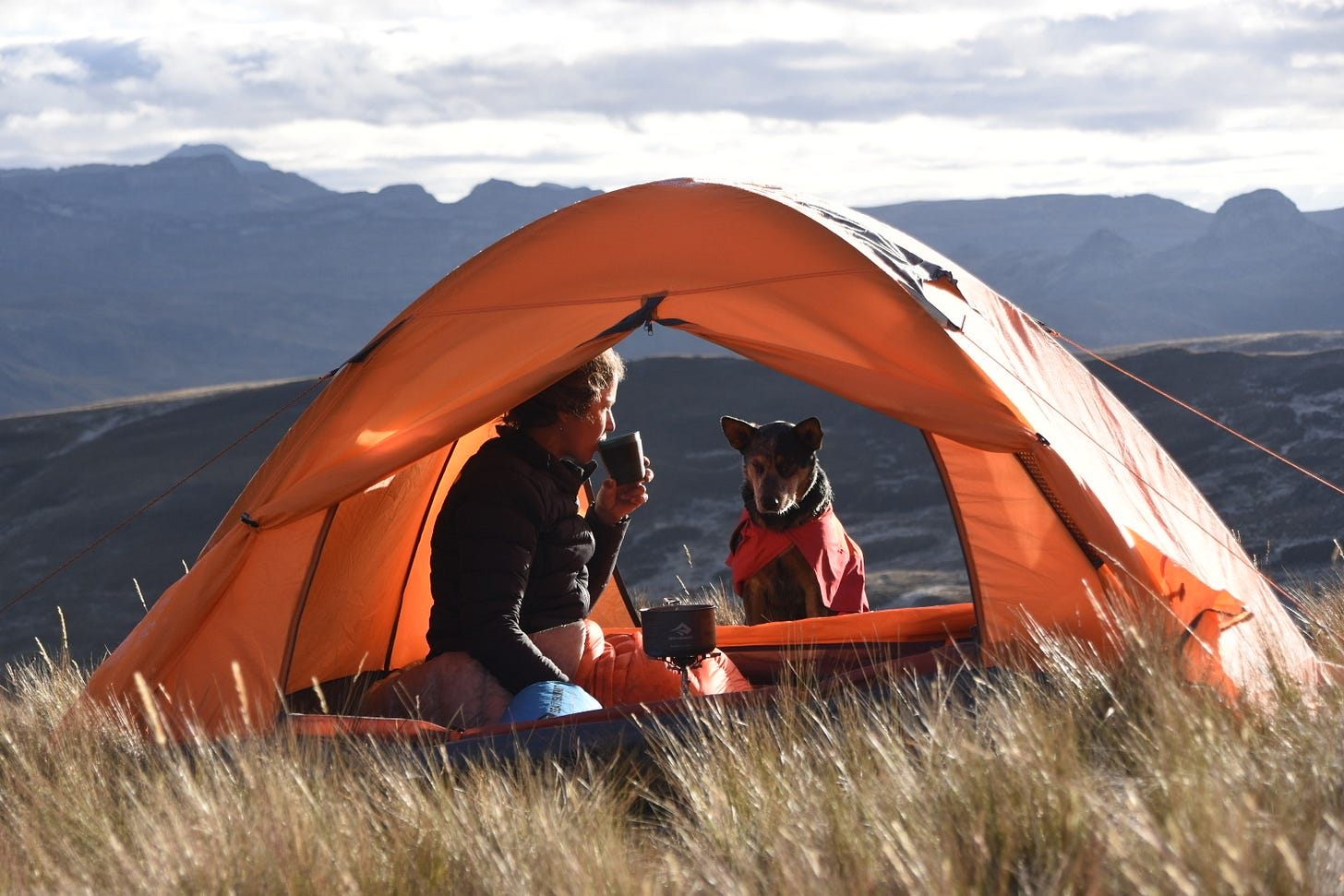
Wombat’s suitability to long-distance walking isn’t the only aspect of the expedition that can be misunderstood. Lucy says it’s hard for some to believe that her motivation for attempting this world first was simply to give it a go.
‘Mainstream media hate it when I say the reason I started this hike was because I wanted to see how far I could go. They really resist it. They’re like, yes, but there must be some deeper reason, and try to mine for an answer that’s contrived, rather than accepting the truth. I never thought I’d go the whole way. Ever. I just wanted to see how far I could get. I thought: worst case scenario, I last a week then go and have a great holiday. That’s how it happened.’
Had Lucy known about the thriving subculture of thru-hiking, she says she probably would’ve gone and walked the Pacific Crest Trail or Appalachian Trail instead. But she didn’t. And while knowledge of thru-hiking – and ultra-light hiking in particular – would’ve been helpful in terms of the gear she carried when she first started, understanding the immensity of the challenge before her would’ve likely put her off beginning altogether.
‘I think my naivety around what it would take was a good thing. That, and the Australian quirk of giving something a go and doing it for a laugh – like, hehe, I tried to walk the length of the earth – is silly, but really cool.’
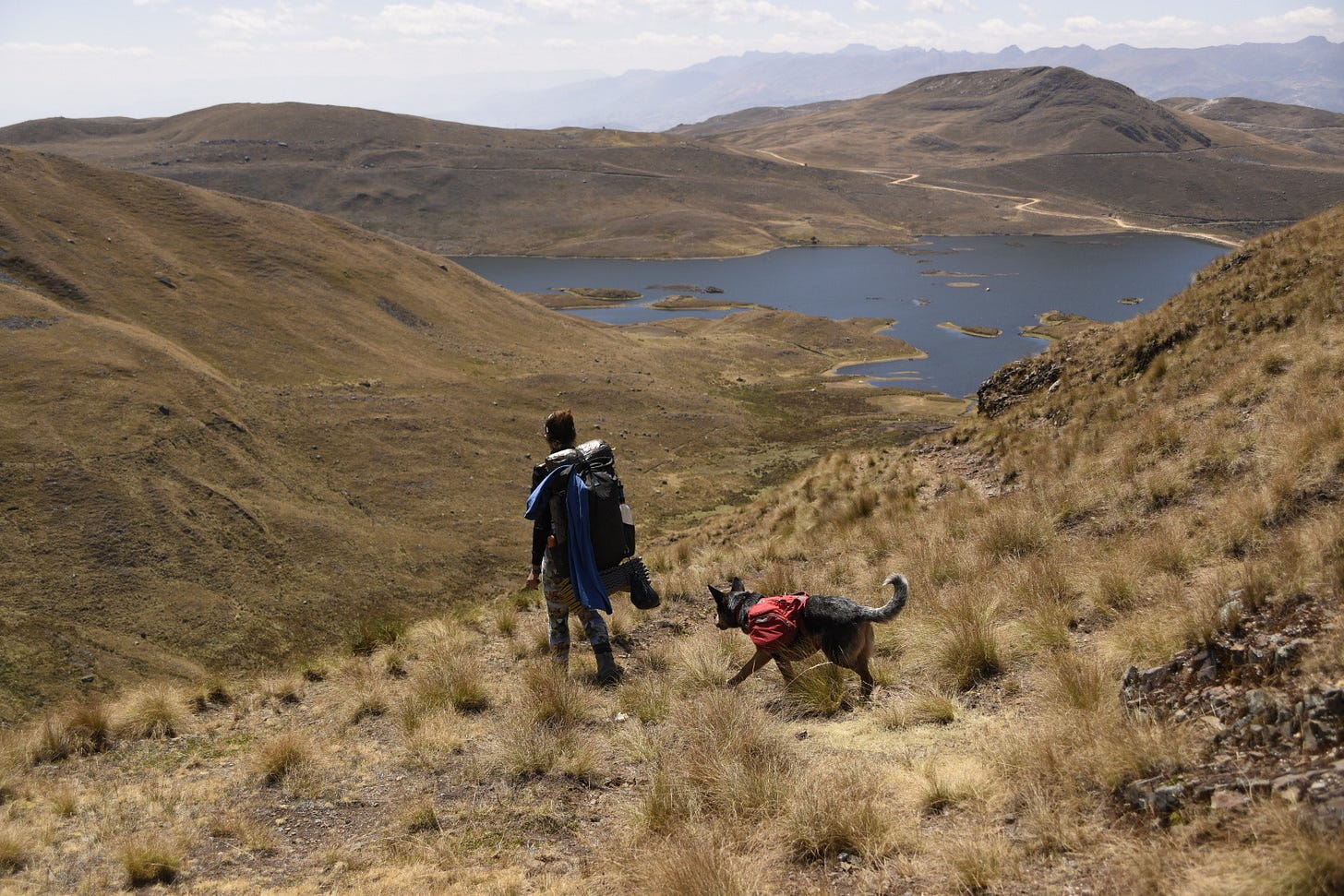
But things became a little more serious when Lucy was awarded a $10,000 adventure grant from The North Face. They believed in her, and so did the people who began following along on Instagram. The community that sprung up around her has been critical to her success so far.
‘Anytime I wanted to quit, someone would donate a ridiculous amount of money so I could buy a new pair of shoes or something, so I’d be like, now I have to get to the next town. And honestly, I was pushed because people were so into the idea that I could be the first woman to do this. Four people start this expedition every year and all of them usually quit within the first year because Patagonia is so brutal.’
That’s not to say that everyone on social media has been supportive. Early on, someone wrote to Lucy with a few choice words of advice: go home, get married and have babies or you’ll die miserable.
‘I shared it online because it really affected me,’ she says. ‘I thought it was so rude. And that was when I knew how strong the community following me is. They tore it down and were like, no, that’s not cool – just because this person has chosen to live one way doesn’t mean you can’t live another. Keep going, they said. So there’s always this force there for when something [like that] happens.’
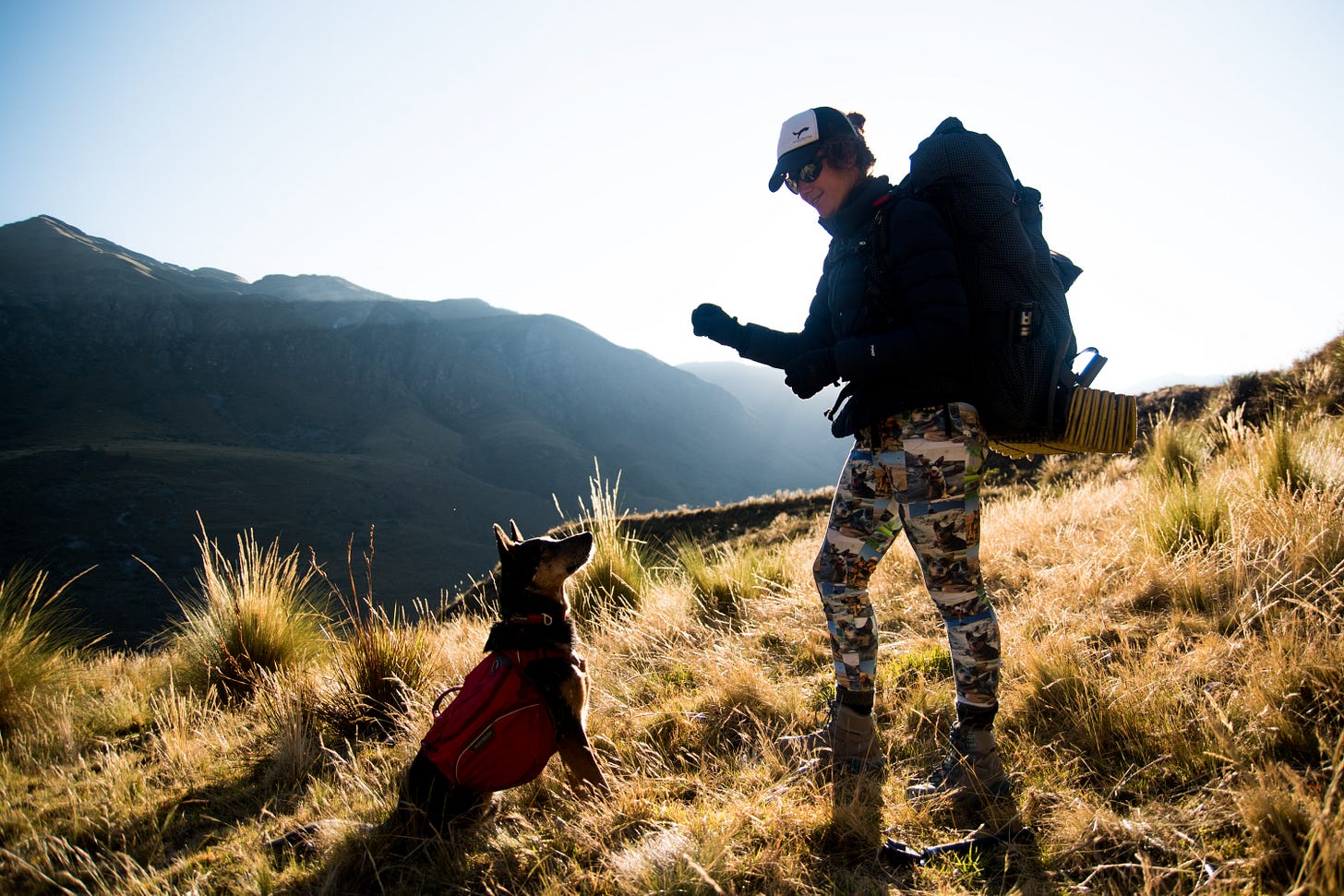
It’s fair to say that Lucy has chosen a somewhat unconventional path. She’s adamant, however, that there’s no shame in giving something a go. She has argued, in a previous interview, that we’re taught not to be so self-indulgent and not to do the things that we really want to be doing1. When I ask her to elaborate, she says, ‘We spend so much time encouraging children to do something because of the experience, because they might discover something that they love, but as soon as we’re adults and there’s a career involved, it becomes like a shaming culture. It’s crazy.’
I’m struck by the way Lucy refuses to seek validation or feel the need to justify what she’s doing. This expedition is, and always has been, about seeing how far she can go. Being the first woman to do so is an added bonus. Every so often someone will tell her that she should be raising money for a cause, but she believes that people too often justify what they’re doing by raising money.
‘They’re doing something for the love of it but get distracted because they’ve decided to pair it with a cause, which really takes away from the journey,’ she says. ‘And I don’t think people quite realise how much time is taken away by being an ambassador. For me, I get into town and have to find accommodation or set up camp. I have to find food and decide whether it’s safe or not, or whether it’s too late to even look for food. And I have to get all that done in a very small timeframe. It’s also insensitive. No matter what cause I choose, I’m travelling through developing countries. It’s just not appropriate and I feel like it’s enough to be closing the gender gap on a feat that’s pretty momentous without entangling it in something that diminishes the achievement.’
The achievement, it should be stressed, is monumental. Though Lucy tends to remain optimistic and upbeat on social media, what she’s doing is the furthest thing from a walk in the park. It can be dank and difficult, a near-impossible challenge, which is highlighted whenever friends come to walk with her. She often winds up carrying extra gear so they can keep up, with one friend confirming, unequivocally, that “Nobody could keep up with you”.
‘I still get a lot of people thinking they’d love to be doing what I’m doing,’ says Lucy. ‘The same kind of romance I had when I first started because I thought I’d be learning and listening to podcasts, and seeing beautiful things the whole time. And I do, but I’m also rushing to get through for visas and trying to understand what people tell me. And I guess, because I’m a female, it’s sometimes easier because there’s such a family focus here and I feel really supported [by the locals], but on the other hand, there’s also this assumption of if she can do it, I can do it.’
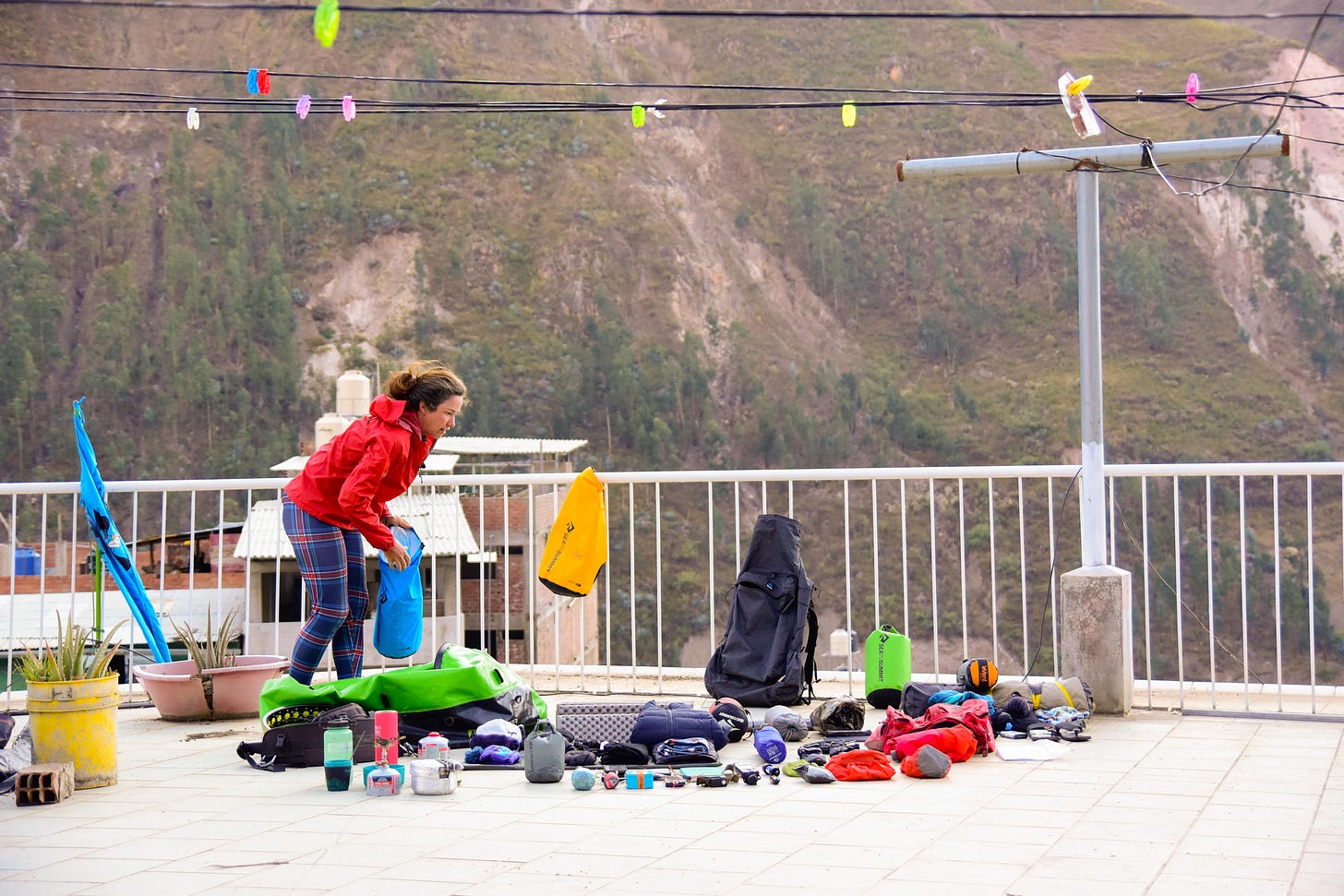
There’s one area where some people are particularly keen on following in Lucy’s footsteps. The Darien Gap, which separates Panama from Colombia, is a densely forested region home to a number of Indigenous groups. There are no roads through the treacherous terrain and criminal groups – drug runners, arms traffickers – have long taken advantage of the lack of law enforcement. An ever-increasing number of refugees also use the trails to head north in search of opportunity and safety; according to the Panamanian government, nearly 250,000 people crossed into the country in 20222, almost doubling the number recorded in 2021. A further 36 were reported as dying, though this number is believed to be much higher.
Lucy was able to cross the Darien Gap escorted by SENAFRONT, Panama’s national border service, and often receives emails from people asking for advice and demanding her contacts. ‘Diplomacy,’ says Lucy, when I ask how she managed it. ‘A lot of diplomacy. I always said that if I can’t walk through that section I’ll have to find an alternative, which would’ve been to kayak. That’s acceptable under the rules of what I’m doing, but it was just amazing that I was able to meet the right people and do it safely.’
As to why are people are so determined to do the same? ‘I think they want to go through because it might elevate their profile in terms of being an influencer,’ she says. ‘They want to do the most thrilling thing, but they’re a bit naive about the reality. And above the safety element, for me, one of the most difficult things of walking through there was that I didn’t feel great about being a privileged white person taking a trail where people are desperately hiking through and suffering while I was there for the fun of it. It leaves a pretty bad taste. It was an eye opener, too, because you wouldn’t walk those trails for their beauty. When I set up my tent, I was driving the pegs through layers and layers of rubbish. It’s not pretty, and the water is contaminated. The communities now charge refugees a nominal fee to pass through their towns because they have to buy water and get it shipped in.’
Though Lucy was fortunate to have an escort for the Darien Gap, she had to make do without Wombat. She deemed the crossing too risky so he was instead flown to meet her in Panama. Did he mind missing that section? ‘He’s actually quite partial to the occasional stay at a pet resort,’ says Lucy. ‘He does like luxury.’
You might think that reaching the halfway point of this epic journey would justify some luxury of her own, or be worthy of a wild celebration, but Lucy assures me it was just another day. ‘Like a birthday,’ she says, though she was thankful to share the milestone with a visiting friend. ‘There were moments of “Oh wow, it’s really big”, but it also means I’ve got a lot further to go. I’m progressing a lot faster than I was, but it’s another 15,000 kilometres and I’ve only done 6,000 this year, which means I’m behind. It can be discouraging because I thought I could get it done so much faster.’
Instead of obsessing over the numbers – the enormous, overwhelming numbers – Lucy focuses on maintaining a routine that works for her and enjoying the cultures and landscapes she’s passing through. She’ll be walking north through Mexico for another 6–9 months and people are excited, she says, for her to discover and experience the differences between the various states. ‘I haven’t lost that magic of discovery,’ she says. ‘It’s still really cool.’
At times, though, Lucy does look further ahead. To the US and Canada, sure, but also to what comes next once she has finished. She’s interested in ethnographic writing, in hiking into remote places and working with translators to convey stories about lifestyles that are so removed from our own yet share similarities too. The stories she wants to tell would show the reader that though their life might be different, the way these people are living is equally relevant and joyful. And in a sense, I suppose, she has already turned herself into the perfect test subject.
How to support Lucy’s world-record walk
Though Lucy and Wombat are walking the length of the earth on their own, they are always, always appreciative of any support. Here are a couple of ways you can contribute to their success:
You can make a massive difference by donating $10 a month. It means that Lucy can afford accomodation in town, which will be vital in the US and Canada as the cost of living skyrockets. Your generosity also means that Wombat will never be short of a treat, but don’t worry, Lucy will go hungry before Wombat does. As an added incentive, donating via Patreon will give you access to extra behind-the-scenes footage from the walk.
If you know of a company that wants to support Lucy’s expedition and help pay for the cost of her safety beacon or food bill, she’d be super appreciative. She also has “boring, admin-y” running costs like insurance, storage, website domain and apps to do her communications and storytelling. The safety beacon alone is $60 a month, which Lucy says is worth it because it’s the reason people can look at the live tracker every day. And, uh, the whole safety thing, of course.
Keen to help? Get in touch with her via email or follow along on Instagram or YouTube.
A note on People & Places
You may have noticed that P&P offers a paid subscription option. This works as a kind of tip jar, so if you’d like to offer monetary support, please consider becoming a paid subscriber below. For now there is no difference in what you receive as a free or paid subscriber; either way, you’re appreciated. Thanks again for being here.
https://www.sidetracked.com/fieldjournal/lucy-barnard-walking-the-world/
https://www.iom.int/news/number-migrants-who-embarked-dangerous-darien-gap-route-nearly-doubled-2022



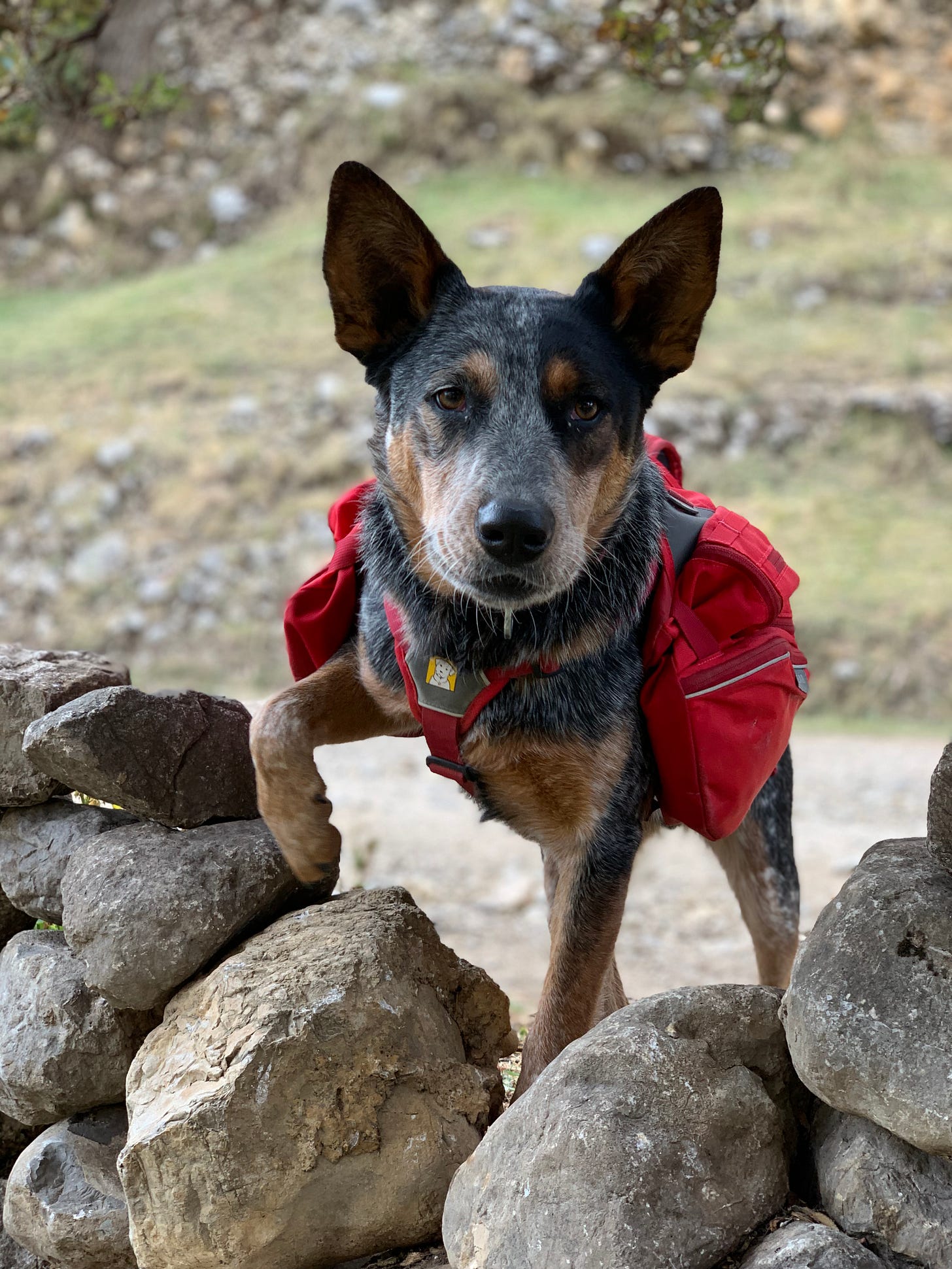
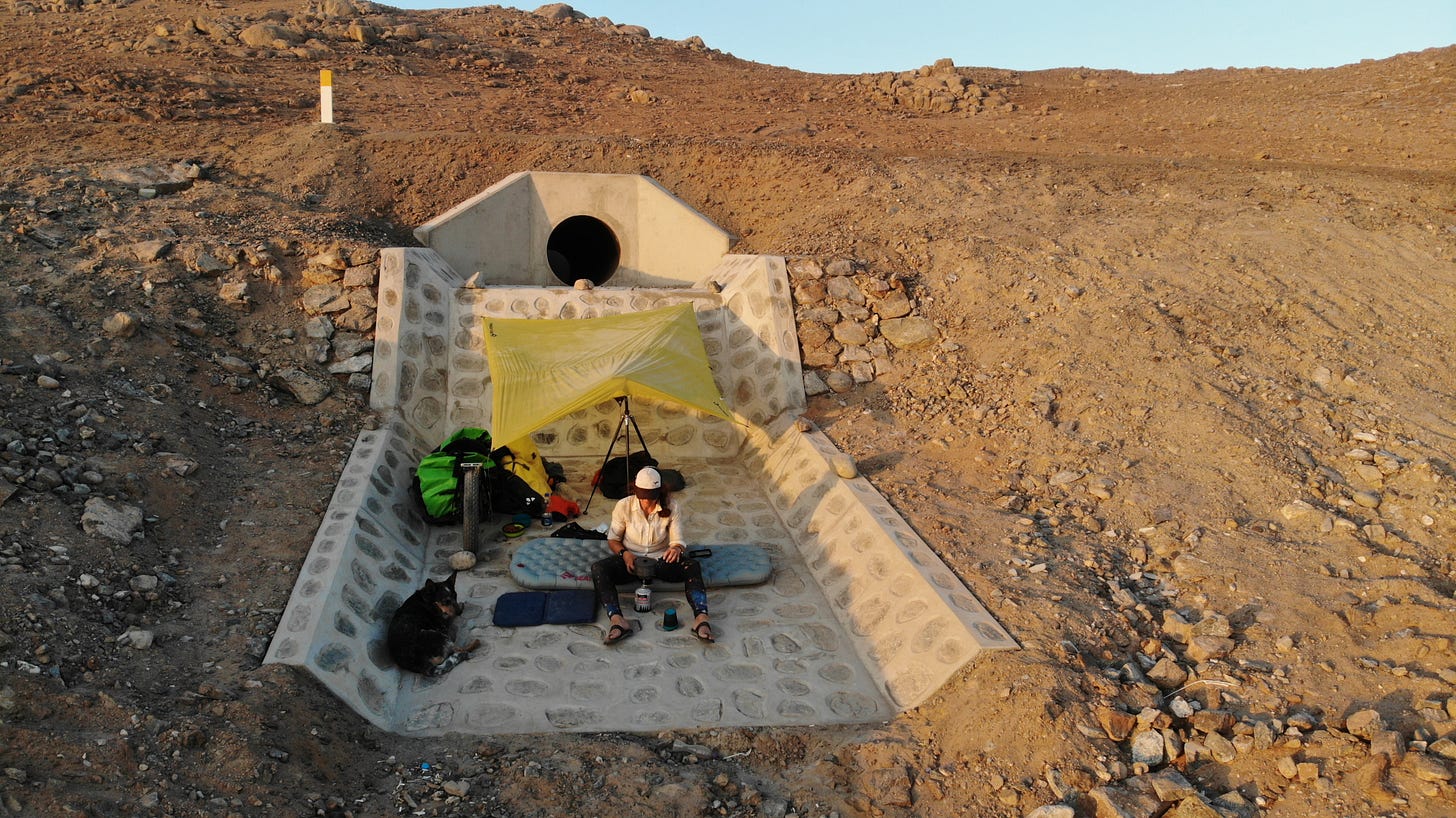
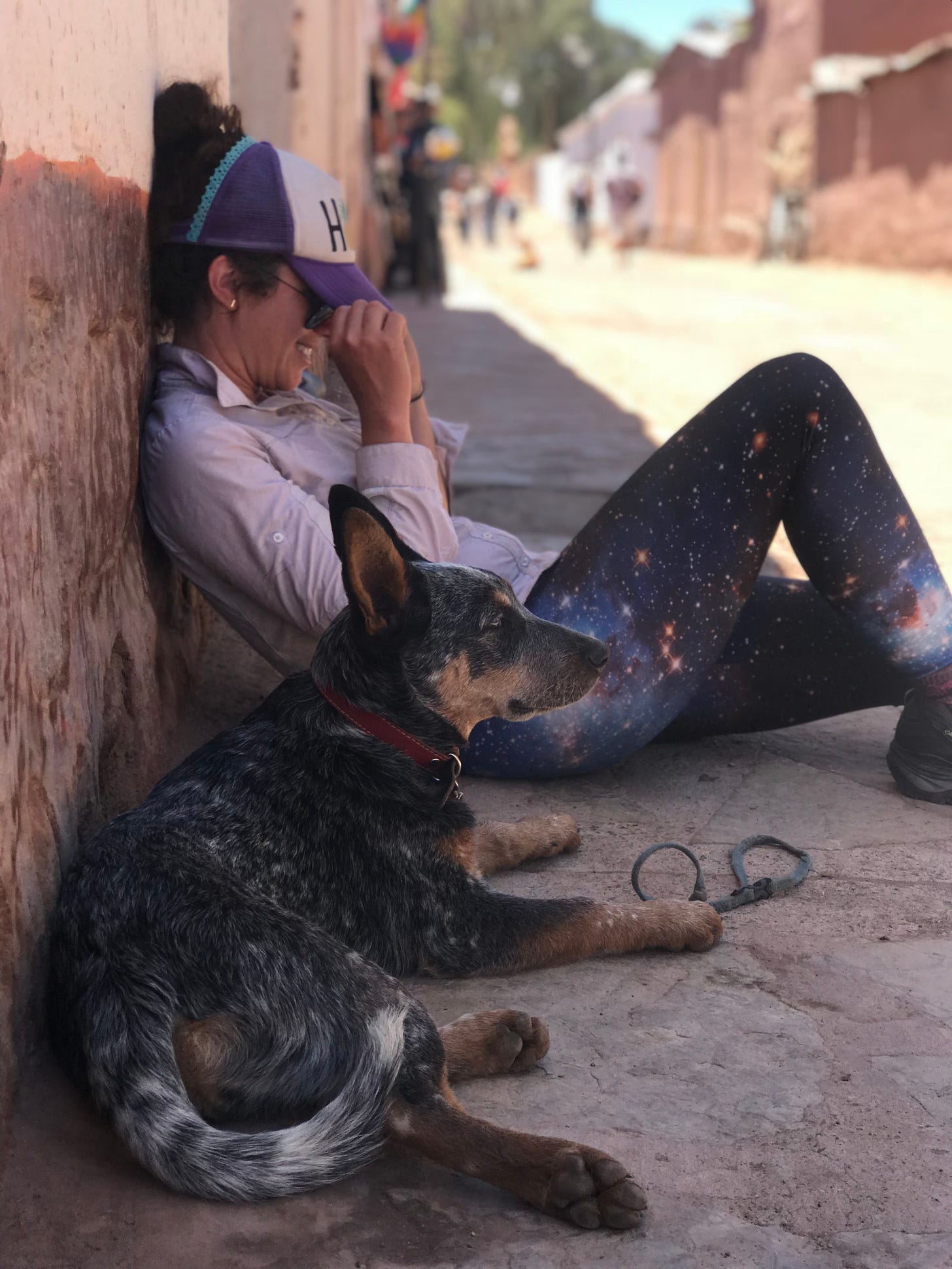
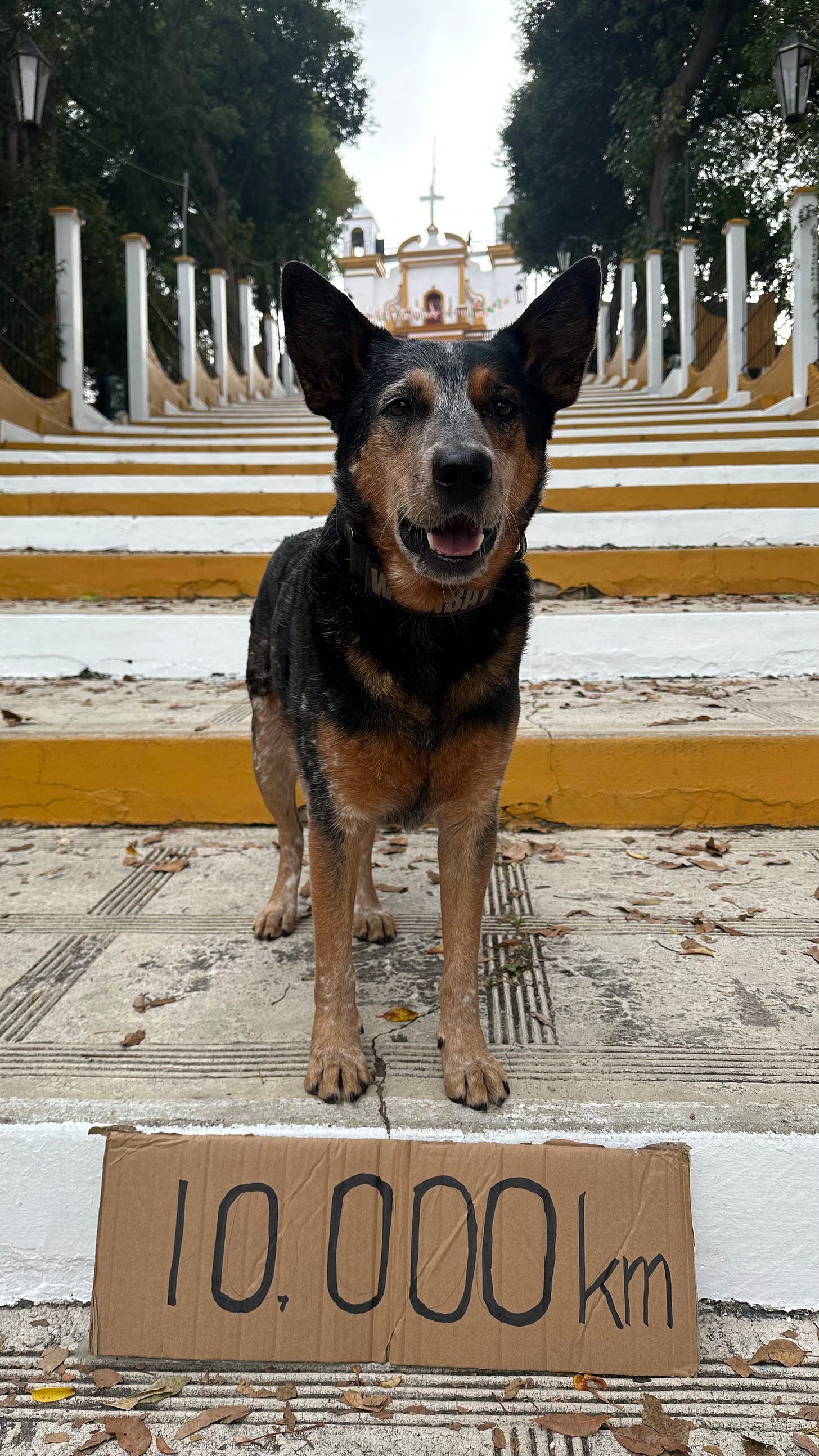
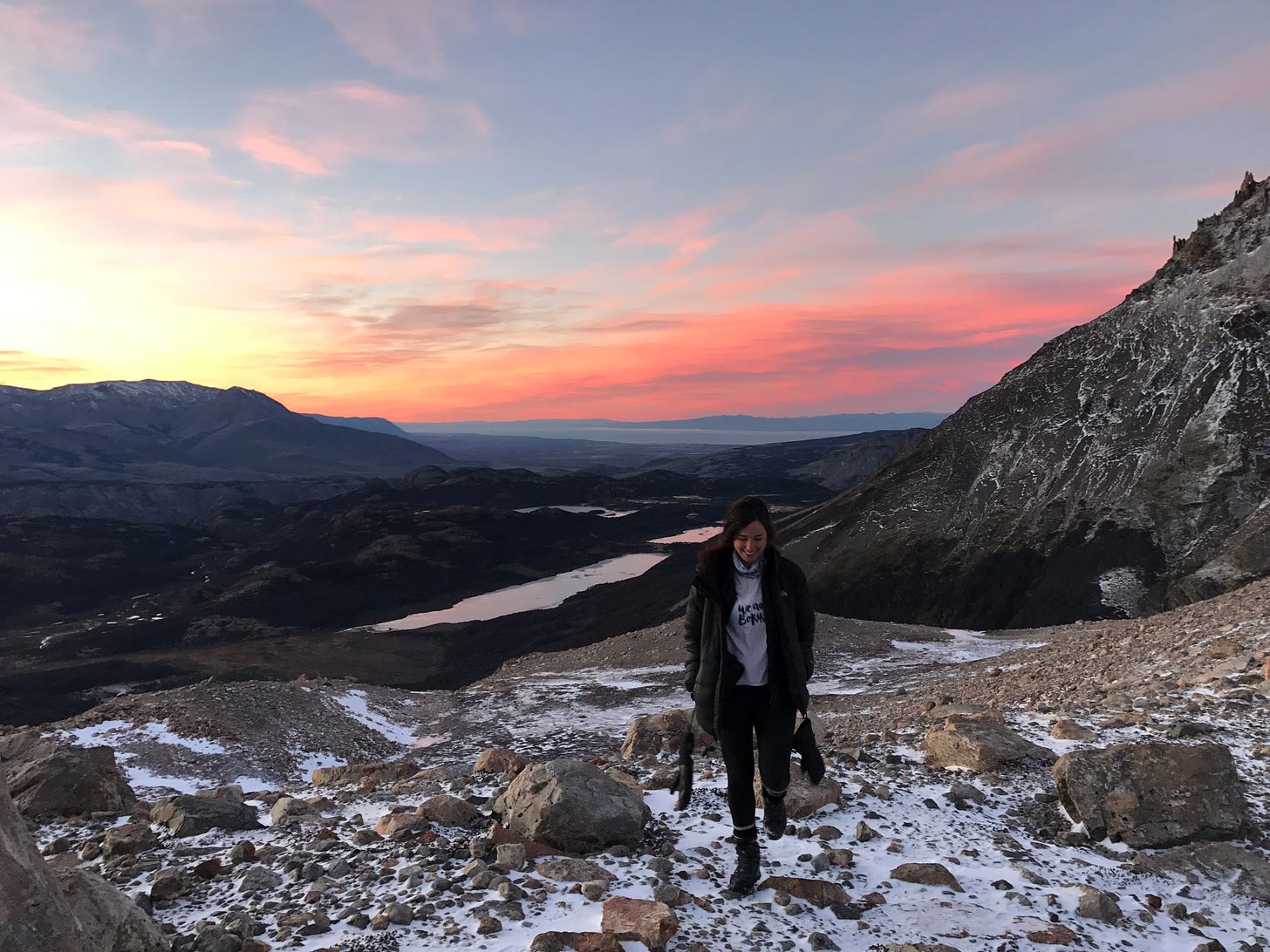
i don't know how or why this showed up on my substack feed, but i'm so glad it did. really enjoyed this read and looking forward to more stories.
I've been hoping you'd write about Lucy at some point! Great read about an unreal journey.